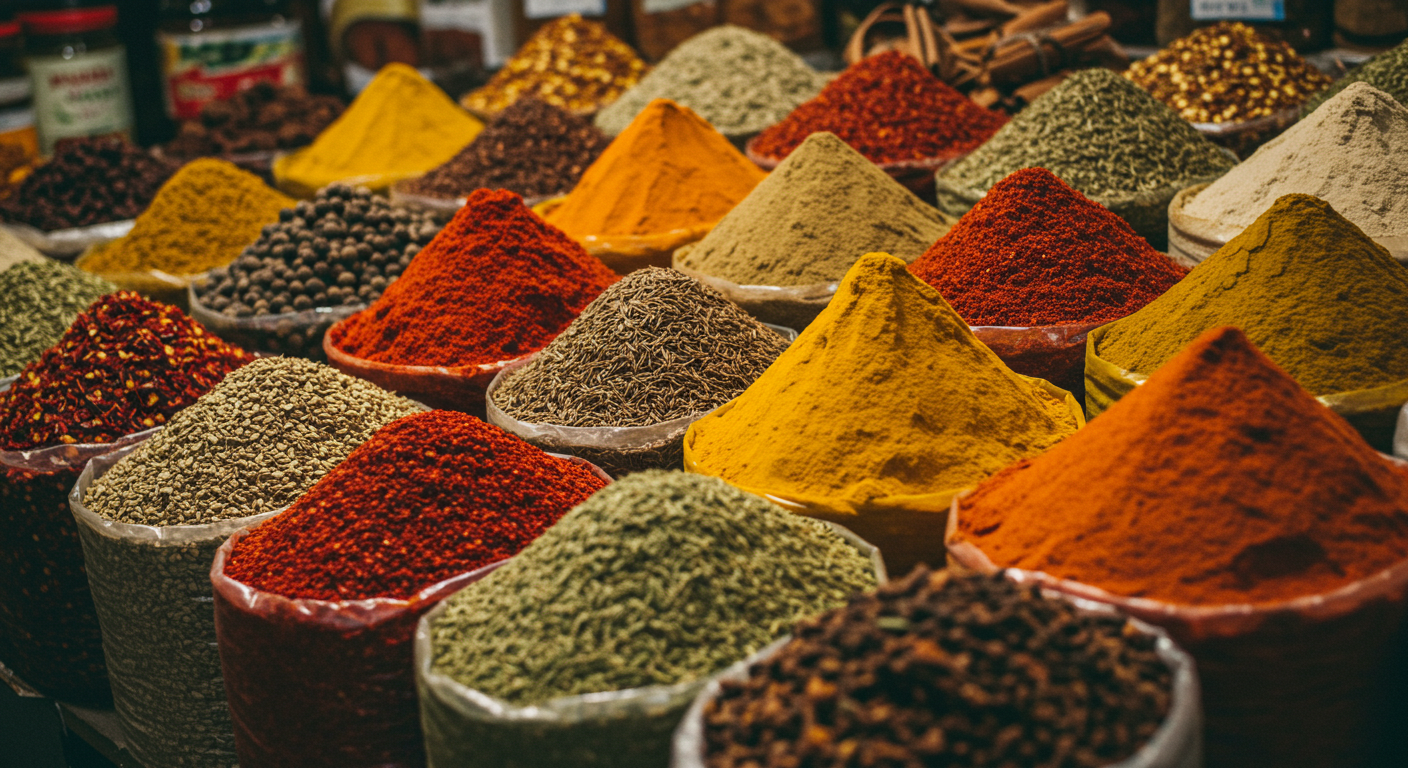Spices are the soul of any cuisine, and African spices, in particular, are bold, aromatic, and deeply rooted in tradition. They don’t just add heat or flavor—they tell stories of ancient trade routes, indigenous healing, and generations of culinary mastery. Whether you’re an adventurous cook or someone seeking new ways to elevate everyday meals, African spices will awaken your palate and transport your kitchen to the continent’s vibrant food markets.
Here are some of the most transformative spices and spice blends from Africa—and how to use them.
1. Berbere (Ethiopia)
Flavor Profile: Warm, spicy, and complex with hints of garlic, fenugreek, and chili.
Berbere is Ethiopia’s most iconic spice blend, used in everything from stews (like doro wat) to lentils and roasted vegetables. Made from a mix of dried chilies, ginger, garlic, cloves, and more, it packs heat and depth.
Try It In: Chickpea stews, grilled tofu, tomato sauces, or sprinkled over popcorn for a spicy kick.
2. Suya Spice (Nigeria, West Africa)
Flavor Profile: Smoky, spicy, nutty, and savory.
Suya spice (also called yaji) is used to coat skewered meats in Nigeria, especially street-style beef or chicken. Made from ground peanuts, cayenne, paprika, ginger, garlic, and bouillon, it’s incredibly versatile.
Try It In: Veggie kebabs, roasted cauliflower, peanut soup, or as a rub for grilled plant-based proteins.
3. Grains of Selim (Uda Pods – West/Central Africa)
Flavor Profile: Smoky, musky, and peppery with a hint of bitterness.
Grains of Selim are dried seed pods used in West African soups and teas. Often cracked or crushed before cooking, they’re ideal for infusing stews and broths.
Try It In: Pepper soup, herbal tea, or in lentil dishes for added warmth and depth.
4. Ras el Hanout (North Africa – Morocco, Tunisia, Algeria)
Flavor Profile: Aromatic, sweet, and spicy with floral undertones.
This legendary blend translates to “head of the shop,” referring to a spice merchant’s best mix. It can contain up to 30 spices, including cinnamon, cardamom, cumin, nutmeg, rose petals, and turmeric.
Try It In: Tagines, couscous, roasted vegetables, or chickpea stews.
5. African Bird’s Eye Chili (Piri Piri – Southern and East Africa)
Flavor Profile: Fiery hot with fruity undertones.
Piri Piri (also known as peri peri) peppers are tiny but mighty. Used in Mozambique and Angola, the spice blend also includes garlic, lemon, vinegar, and oil.
Try It In: Marinades, hot sauces, tofu stir-fry, or anything that needs a fiery twist.
6. Calabash Nutmeg (Ehuru – Nigeria, Cameroon)
Flavor Profile: Warm, nutty, and musky—similar to a cross between nutmeg and pepper.
Used in soups, sauces, and stews, calabash nutmeg adds a subtle, mysterious flavor. It’s typically roasted and ground fresh before use.
Try It In: Ogbono soup, pepper soup, or vegan broths.
7. Fenugreek Leaves and Seeds (North and East Africa)
Flavor Profile: Slightly bitter, earthy, and sweet.
While fenugreek is widely used in Indian cuisine, it’s also popular in Egypt and Ethiopia. In Ethiopia, it’s part of berbere and niter kibbeh (spiced butter). The leaves are great in leafy curries.
Try It In: Lentil stews, herbal teas, or flatbread dough.
8. African Basil (Efirin – Nigeria, Cameroon, Ghana)
Flavor Profile: Sweet, peppery, and slightly minty.
Different from Mediterranean basil, African basil is stronger and often used in medicinal teas or soups. It supports digestion and has antimicrobial properties.
Try It In: Stews, herbal teas, pesto, or infused oils.
9. Kpakpo Shito (Ghana)
Flavor Profile: Fragrant, slightly spicy, and floral.
These small, round, green chilies are used in Ghanaian sauces and soups. While not a dried spice, their unique aroma and flavor make them essential to Ghanaian cuisine.
Try It In: Jollof rice, pepper sauces, or green chutneys.
10. Mbongo Spice (Cameroon – also called Jansang or Mbongo Tchobi)
Flavor Profile: Earthy, smoky, and rich.
Used in a dark, aromatic stew called mbongo tchobi, this blend includes wild spices like umbu bark and njansang seeds. It creates a deeply flavorful, almost medicinal base for plant-based or fish dishes.
Try It In: Mushroom stews, dark sauces, or black bean soup.
Why African Spices Stand Out
African spices are often fresh-ground, deeply aromatic, and regionally adapted to enhance native ingredients. Many of them also have:
- Medicinal properties: Antibacterial, antifungal, and digestive-supporting qualities.
- Cultural significance: Used in ceremonial cooking and festive meals.
- Sustainability: Sourced from wild trees, home gardens, or traditional farming methods.
These aren’t just flavor enhancers—they’re story-tellers and healers.
Tips for Using African Spices in Everyday Cooking
- Start with a blend: Try ras el hanout or suya spice for easy integration into your routine.
- Toast before use: Lightly toasting whole spices brings out their oils and aroma.
- Infuse oils: Add whole grains of Selim or cloves to hot oil for rich base flavors.
- Make your own rubs: Combine ground African spices with sea salt and use them as dry rubs or marinades.
African spices are a vibrant way to bring excitement, tradition, and health benefits to your kitchen. Whether you're whipping up a quick weekday dinner or hosting a cultural feast, adding even one of these spices to your pantry will expand your culinary horizons. Dive in, experiment, and savor the richness of Africa—one sprinkle at a time.


